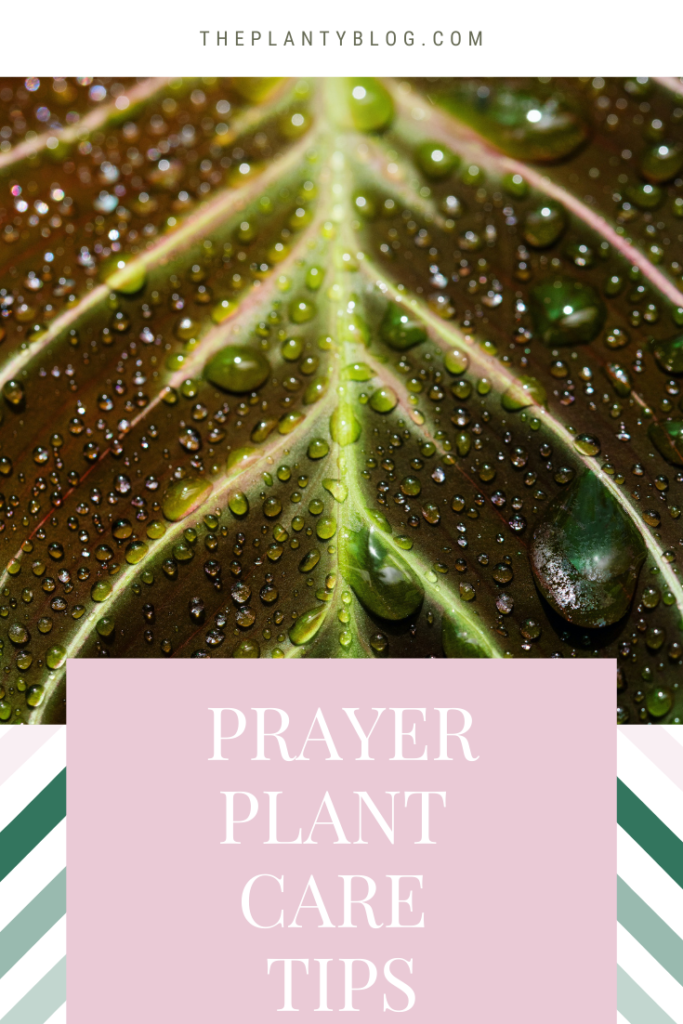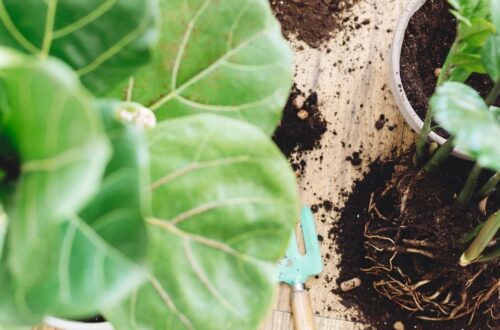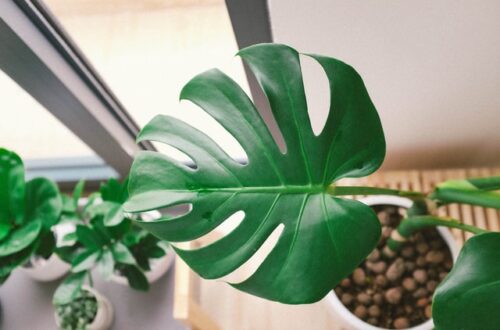Prayer Plant Care Tips: How to Care for Your Maranta Houseplant
Are you looking to add a Prayer Plant to your collection? Here is everything you need to know about Prayer Plant Care!
Undeniably beautiful, and (relatively) easy to care for!
The ornate foliage of the “Prayer Plant” (scientifically named Maranta Leuconeura) is aptly nicknamed for the way that the leaves fold upward in the evening, and bow to the sunlight during the day. I would consider this plant moderately easy to care for; once you get a handle on their needs they are very straightforward. Much less fussy than their sisters (calathea, stromanthe, and ctenanthe), this member of the marantaceae family is a favourite of plant enthusiasts, and a personal favourite of mine! Here is everything you need to know about prayer plant care, by category!
Light:
If prime real estate light isn’t an option, you’re in luck! Prayer Plants are medium to even low light tolerant houseplants. They do enjoy bright indirect light, but they cannot handle too much light, and certainly not direct light as it can cause the foliage to fade or even burn. In my experience, they will live happily in an east or north-facing window, or pulled back from a west or southern window.
Watering your Prayer Plant:
Prayer Plants prefer moist soil, but like all plants, they can be susceptible to root rot when overwatered. A moisture meter is a great tool to determine moisture in the soil, and whether your prayer plant is due for a drink. Your prayer plant may droop when it’s thirsty, and the leaves may grow crispy or even fold over into the shape of a taco. Watering may perk the plant back up, but if it’s been driven to this point of unhappiness, you may suffer the loss of a few leaves as consequence.
In the case of the red veined and lemon lime marantas, their leaves are a bit thicker and hardier than the green or variegated varieties. As a result, they tend to be a little more forgiving of a late watering.
Any member of the marantaceae family has a particular sensitivity to hard water or chemically treated water. Distilled, filtered, or rainwater is always preferred, but with the hardier red and lemon lime maranta, tap water is generally satisfactory. Always use room temperature water, as cold water will shock any houseplant. Keep in mind, they are accustomed to the warmer tropical rains.
Prayer Plants and Humidity:
Prayer plants hailing from the tropics, will always prefer higher humidity levels. Ideally around 50 to 60 percent humidity is recommended, but the varieties with thicker leaves are a bit more forgiving if humidity is an area that your household struggles with. Check out my article for tips on increasing humidity for your houseplants for a happier Prayer Plant!
Fertilizer:
I always err on the side of caution with fertilizing any member of the Marantaceae family. Read the bottle carefully, and even dilute the fertilizer a little bit more than the recommended dosage. Too much fertilizer or strong chemicals can burn the leaves of your prayer plant. If you pick up your plant from the store and notice the soil is full of tiny beads, those are slow release fertilizer beads, so adding additional fertilizer is not recommended. If you notice that there is an excessive amount of fertilizer beads, I’d recommend picking some of them out or repotting the plant as too many slow release beads can also burn your prayer plant’s leaves.
Soil and Pot Choice:
With any houseplant, drainage is crucial. Selecting a pot with good drainage holes, and a well-draining soil is key to a happy Prayer Plant. They tend to do well in a ceramic pot or even plastic nursery pots.
Terra Cotta is not generally recommended for any of the Marantaceae family because it wicks moisture out of the soil, and Prayer Plants need moisture. However, I have seen it done before (perhaps with a heavy handed waterer!) If you really love that terra cotta aesthetic, I’d recommend using them as a cache pot to keep your prayer plant happy!
When it comes to choosing a soil, most of us know that well-draining soil is important for all houseplants. I find that simple potting mix with a little extra perlite or pumice does the trick for Prayer Plants. Save the chunkier mixtures for the hoyas, aroids, and succulents.
Prayer Plant Propagation:
Prayer Plants root very quickly and easily in water! Simply take a cutting a few centimetres below a node, and drop it into some water. Keep your propagations in bright, indirect light and they will root very quickly.
They can also be propagated in sphagnum moss or even soil, but in my experience, water is the most efficient.
Since prayer plants tend to have unusual growth patterns, I tend to chop and prop any rogue growth to repot back into the mother plant to give it a fuller, bushy look. Pruning your plant this way will also stimulate more growth!
Pests:
Prayer Plants are unfortunately not immune to common houseplant pests. Spider mites, thrips, mealy bugs and aphids are some common pests that might be found on your Prayer Plant. Fungus gnats also can be caught flying around your prayer plant as they prefer to lay their eggs in moist soil. It’s important to inspect all of your houseplants regularly for pests, to stop a small outbreak from becoming an infestation. It’s also good practice to deploy pest preventative measures for your Prayer Plant regularly. These measures can range from consistent leaf and stem cleaning, to giving your plants showers to knock off any dust or rogue pests that could be hiding. For more on houseplant pests, check out this article on pest prevention and treatment.
Prayer Plants and Pets:
The ASPCA lists prayer plants as non-toxic to cats, dogs, and horses. Although there aren’t any life-threatening toxic effects, ingesting a houseplant may cause allergies, vomiting, diarrhea, or general upset stomach in your pet so it’s always a good idea to prevent your pets from consuming your houseplants. I have an entire section on pets and houseplants if you’d like to learn more!
Additional Prayer Plant Care Tips:
- Spots on your leaves? You may need to use some fungicide on your prayer plant. All members of the marantaceae family can be susceptible to fungus issues.
- Prayer plants can get yellow leaves for various reasons. One often overlooked reason may be that they dislike drafts or chilly conditions. You may have to move your prayer plant away from a drafty window or vent and be sure to check your thermostat. For a happy prayer plant, we want to replicate their natural conditions as much as possible.
Give Them a Try!
All and all, prayer plants are a great choice for the beginner plant parent looking to step up their houseplant game. While it may need a bit more maintenance than your zz plant, their gorgeous foliage and enchanting growth patterns are certainly worth the extra effort, and are a true staple of the plant community. Leave a comment below with any tips or tricks that I might have missed, and don’t forget to follow my plant journey on Instagram @plantyquirkyblogger.

Happy Planting!



One Comment
Pingback: